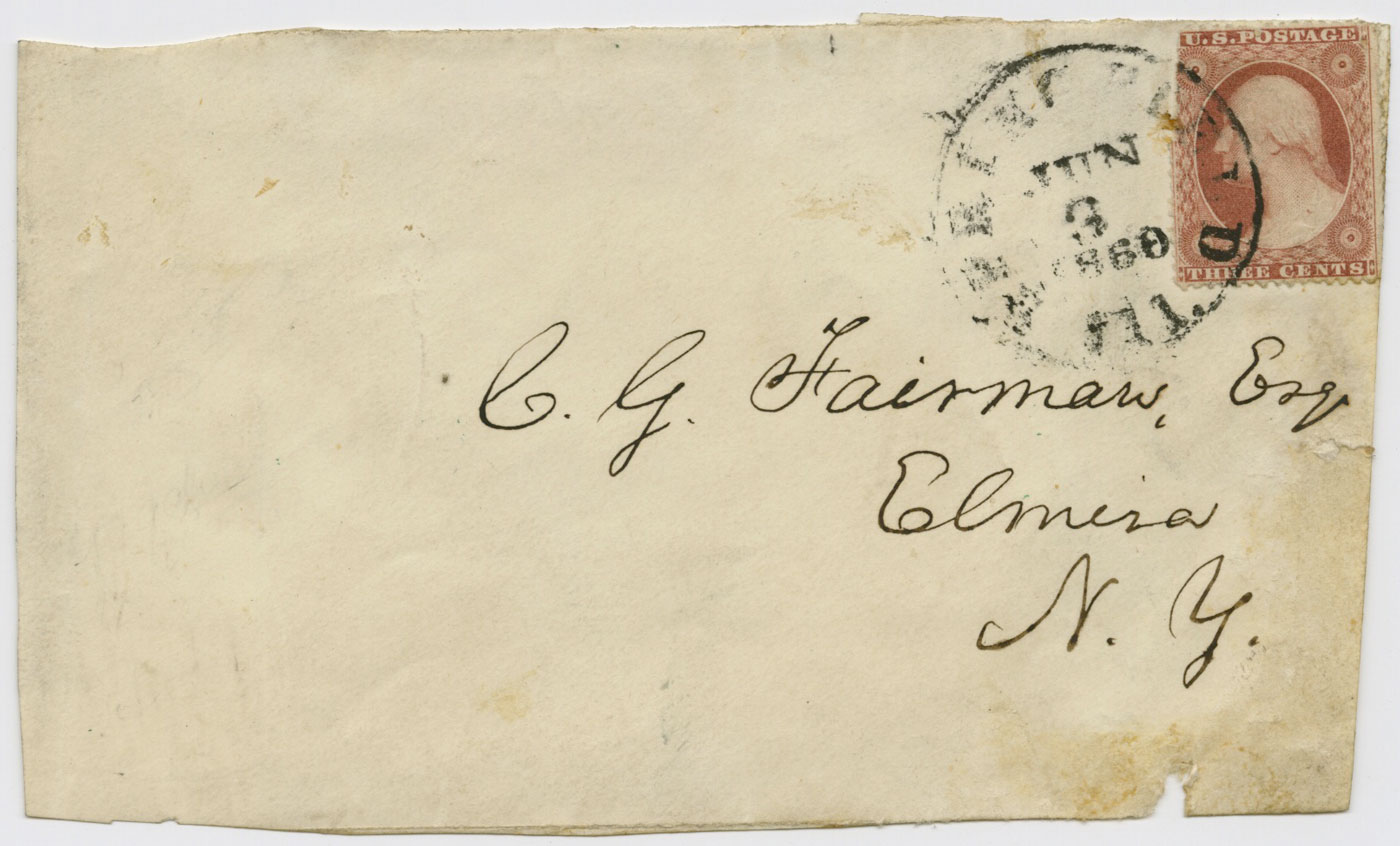Republican Candidate (and Railsplitter) Abraham Lincoln Courts Democrats During the Campaign of 1860




In a fascinating and unpublished memento of the 1860 presidential campaign, Lincoln writes the editor of the Republican newspaper the Elmira Daily Advertiser, who refers to him as the "Rail Splitter”.
Coming less than two weeks after the term’s invention, it is the earliest mention of Lincoln as railsplitter we have discovered in Lincoln's correspondence
Abraham Lincoln will forever be remembered as the Railsplitter. The genesis of this nickname occurred on May 10, 1860, when Illinois Republicans convened at Decatur to endorse a...
Coming less than two weeks after the term’s invention, it is the earliest mention of Lincoln as railsplitter we have discovered in Lincoln's correspondence
Abraham Lincoln will forever be remembered as the Railsplitter. The genesis of this nickname occurred on May 10, 1860, when Illinois Republicans convened at Decatur to endorse a favorite son candidate for president. Lincoln was the likely choice, but his supporters felt he needed a catchier nickname than “Old Abe” or “Honest Abe.” Thus, future governor Richard J. Oglesby and John Hanks, the latter a first cousin of Lincoln’s mother, located a split-rail fence supposedly built by Lincoln in 1830. When they walked into the hall carrying two of the rails – decorated with flags, streamers, and a sign that read, “Abraham Lincoln/The Rail Candidate” – the crowd went wild. Although Lincoln claimed he could not say for certain that he had split those particular rails, he said that “He had mauled many and many better ones since he had grown to manhood.” By now, Lincoln was a prominent lawyer, not a backwoodsman. But, he had split rails in his youth, and the image held enormous appeal to voters who shared similar backgrounds and cultural beliefs, and this made Lincoln the symbol of the self-made frontiersman and representative of honest, enterprising labor. A week after the state convention, the Republican Party held its national convention in Chicago, and on May 18, 1860, aided by his railsplitter image, Lincoln was nominated for president.
Just 12 days after his nomination, Charles G. Fairman, the editor of the Elmira (N.Y.) Daily Advertiser, sat down to write Lincoln a letter. In it, be asked for an autograph for a Democratic friend whose political case was “hopeless”, and then refers to Lincoln as the ‘regular Rail Splitter. Autograph letter signed of Fairman, Elmira, N.Y., May 30, 1860, to Lincoln. “At the request of a friend – a gatherer of autographs – but a hopeless Democrat who dare not ask the favor himself, I beg the honor of receiving your autograph. Asking your pardon for the undone freedom of my request, I have the honor to subscribe myself, Charles G. Fairman, Editor Daily Advertiser.” He follows up with a P.S. “Let it be a regular ‘Rail Splitter!”
Lincoln responded with a willingness to accommodate even a political opponent. In this unpublished and previously unknown Autograph letter signed, Springfield, Ill., June 2, 1860, he wrote to Fairman: “Dear Sir: Below is an autograph for your Democratic friend. Yours truly, A. Lincoln.” The postmarked envelope in Lincoln’s hand is still present, as is the retained copy of the letter Fairman wrote to Lincoln. After he was nominated for president, Lincoln received requests for autographs from all over the country. Almost all of these were written out by secretaries and clerks, with Lincoln simply signing. This one is completely in Lincoln’s hand, and likely merited his extra time because the sender was a newspaper editor supporting his candidacy.
This the earliest use of the term “rail splitter” in any correspondence to or from Lincoln that we have ever seen. Moreover, a search of the Lincoln Papers at the Library of Congress and public sale databases going back 40 years fails to turn up an example of the term of earlier date.

Frame, Display, Preserve
Each frame is custom constructed, using only proper museum archival materials. This includes:The finest frames, tailored to match the document you have chosen. These can period style, antiqued, gilded, wood, etc. Fabric mats, including silk and satin, as well as museum mat board with hand painted bevels. Attachment of the document to the matting to ensure its protection. This "hinging" is done according to archival standards. Protective "glass," or Tru Vue Optium Acrylic glazing, which is shatter resistant, 99% UV protective, and anti-reflective. You benefit from our decades of experience in designing and creating beautiful, compelling, and protective framed historical documents.
Learn more about our Framing Services










































































































